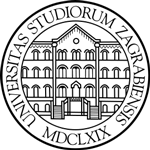Modeling And Simulation As The Basis For Hybridity In The Graphic Discipline Learning/Teaching Area
Abstract
Only some fifteen years have passed since the scientific graphics discipline was established. In the transition period from the College of Graphics to «Integrated Graphic Technology Studies» to the contemporary Faculty of Graphics Arts with the University in Zagreb, three main periods of development can be noted: digital printing, computer prepress and automatic procedures in postpress packaging production. Computer technology has enabled a change in the methodology of teaching graphics technology and studying it on the level of secondary and higher education. The task has been set to create tools for simulating printing processes in order to master the program through a hybrid system consisting of methods that are separate in relation to one another: learning with the help of digital models and checking in the actual real system. We are setting a hybrid project for teaching because the overall acquired knowledge is the result of completely different methods. The first method is on the free programs level functioning without consequences. Everything remains as a record in the knowledge database that can be analyzed, statistically processed and repeated with new parameter values of the system being researched. The second method uses the actual real system where the results are in proving the value of new knowledge and this is something that encourages and stimulates new cycles of hybrid behavior in mastering programs. This is the area where individual learning incurs. The hybrid method allows the possibility of studying actual situations on a computer model, proving it on an actual real model and entering the area of learning envisaging future development.

This work is licensed under a Creative Commons Attribution-NonCommercial-NoDerivatives 4.0 International License.






